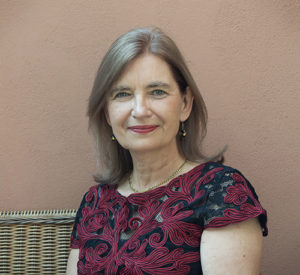The Complete Pianist is exactly that: a comprehensive, generous guide to playing and teaching the piano, and one of the most significant volumes on piano technique to appear in recent decades, written by renowned pedagogue and British concert pianist Penelope Roskell.

Penelope Roskell
© John Batten
The result of a lifetime of piano playing, teaching (Penelope Roskell is professor of piano at Trinity-Laban, one of the UK’s foremost conservatoires) and research, The Complete Pianist aims to help pianists of all levels improve their playing from the very earliest stages of learning a piece, through all the technical challenges and interpretative decisions to finding inspiration in the act of performance itself. Throughout, there is a strong emphasis on healthy technique and playing without tension, and Roskell continually reiterates that technique should serve the music, that it is a means to enable the player, whatever their level of expertise, to play with expression, vibrant colour and confidence.
Penelope Roskell’s approach to technique grew out of personal experience. As young pianist she experienced unpleasant physical symptoms while practising Liszt’s second piano concerto, and found that physical tension adversely affected her sound. She set out on a lifelong mission to develop a healthier approach to piano playing, drawing on yoga, Alexander Technique, Tai Chi and Feldenkrais, an understanding of anatomy, and her own research, often trying out exercises and techniques with her students to establish what worked or was most beneficial, both to the physical body of the pianist and the production of expressive sound.
Roskell’s technical and musical exercises, such as Empty Sleeves or The Hot Air Balloon and Parachute Touch, aim to balance and relax the body or simplify and explain the physical movements required to create a particular sound or effect on the piano. Such descriptive, easily understood exercises can be particularly appealing to young people or early students who may find visual cues more helpful than verbal explanations. In addition, many of the exercises which Penelope advocates are based on the naturally flowing bodily movements we use in everyday life, thus making them relevant and more easily put into practice at the piano. The Complete Pianist contains 250 exercises, newly-devised by the author, amongst some 300 video demonstrations by Penelope Roskell herself, which can be accessed directly via QR codes within the main text of the book.
This comprehensive book covers all aspects of piano technique including posture, finger touch and tone production, chords, octaves, rotation, and lateral movements. There are also sections on mental preparation, effective practice, sight reading, memorisation, phrasing, rhythm, articulation, sound production, pedalling, injury prevention and understanding and managing performance anxiety.
The emphasis on preventing and managing injury is particularly important: until fairly recently, musicians’ health and wellbeing were rarely discussed and hardly touched upon in their teaching and training. Injury was regarded as a taboo subject, not to be mentioned for fear of revealing a weakness that may lead to loss of work, and musicians tended not to seek specialist help for health issues such as RSI or tendonitis. As the UK’s foremost piano teacher specialising in pianists’ injuries, and Piano Advisor for the British Association for Performing Arts Medicine, Penelope Roskell offers highly informed, but straightforward and pragmatic advice for pianists of all ages and levels to encourage healthy technique. The Complete Pianist includes sections on injury recovery, rehabilitation and prevention, developing hand and finger strength, and hypermobility (double-jointedness) and specific issues relating to this for the pianist. In addition, section 22 (The Inspired Pianist) debunks many of the myths and obstacles of piano playing and performance, and offers intelligent suggestions to encourage motivation, set realistic goals and build confidence to maintain one’s interest in and enthusiasm for the piano. There is also a lengthy section on understanding anxiety, a significant issue for many pianists, professional and amateur. Once again, Penelope offers sensible, sympathetic advice – from understanding the physiology of anxiety and the effects of the release of adrenaline to dealing with perfectionism and negative thinking.
In addition to the many videos throughout the book, which range from simple piano pieces to concert repertoire, there are detailed appendices on anatomy and a glossary of terms which occur in the text.
In sum, The Complete Pianist is a remarkable achievement, a comprehensive manual for pianists and teachers, packed with invaluable accumulated wisdom and intelligent advice, and excellent supporting materials. Penelope Roskell simplifies the craft and art of piano playing, without ever devaluing musical ability, talent and artistry, and provides pianists with the tools to practice and work independently, yet with the sense of a supportive, sympathetic teacher always at one’s side, encouraging one to continually develop one’s artistic skill.
Highly recommended.
The Complete Pianist is published by Edition Peters UK and is currently available in the UK, Europe and the US




